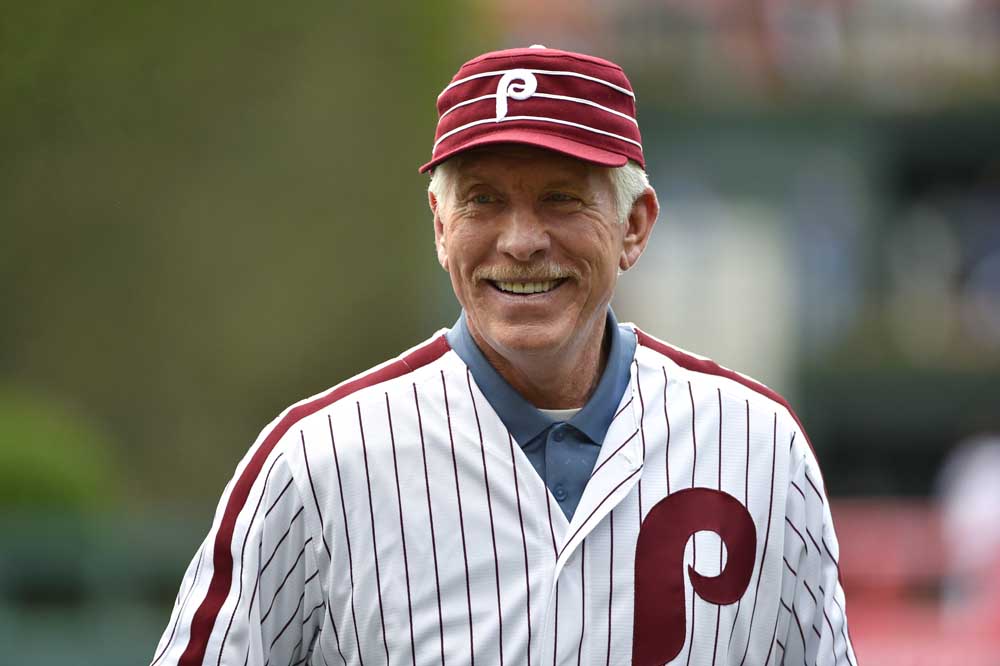Why are there so few 3rd basemen in the Hall of Fame?
Published 12:00 am Tuesday, January 30, 2018

- Schmidt
Say this for third base: It has the best nickname of any position in baseball. Truth is, though, the hot corner can be pretty cold.
“Don’t let the hot corner concept fool you,” Mike Schmidt, perhaps the greatest third baseman in major league history, said by phone last week. “The third baseman’s got his own little corner to protect, some down-the-line pop-ups and a couple of bunt plays here and there, but for the most part, a third baseman can go an entire game and never see any defensive action at all. The shortstop’s got to be all over the place on the field. If you play shortstop, you can play anywhere on the field. Going from short to third, it’s a walk in the park.”
Schmidt made the move in the minors, won 10 Gold Glove awards with the Philadelphia Phillies and sailed into the Hall of Fame on his first try, in 1995. Yet his position is the thinnest on the Cooperstown roster, and nobody quite knows why. Chipper Jones, elected last week, is just the 17th Hall of Famer whose primary position was third base. Only eight of those players made their major league debut after Jackie Robinson integrated the majors in 1947.
“I don’t know, maybe the life span of a third baseman is not what it should be,” Jones said Thursday at a news conference. “We’re known as hockey goalies down there, just trying to knock stuff down. That’s a great question. I’m proud to be a part of that very small fraternity.”
Of the other new inductees — Vladimir Guerrero, Jim Thome and Trevor Hoffman — two also played third base. Thome spent almost 500 games there in his early years with the Cleveland Indians, and Hoffman played 41 games at third in 1990 for the Charleston (West Virginia) Wheelers, a Class A affiliate of the Cincinnati Reds. Both found better fits elsewhere: Thome at first base, Hoffman on the mound.
Thome played third in the 1995 World Series against Jones and the Atlanta Braves, but when the Indians returned two years later, Thome had settled in at first base. The Indians had lost their left fielder, Albert Belle, as a free agent, and they replaced his power with Matt Williams, a third baseman. Thome — who had been heckled during his rookie year as he struggled to learn third at a cavernous Municipal Stadium — was finally making progress when he switched.
“I had just started to get comfortable when I was asked to go to first,” he said. “Now, longevitywise, could I have stayed there? Probably not, no. But knowing that I played third base at the big league level, I’m proud of it, and to watch Chipper go in, to me it’s special, because I know how tough that position is.”
Hoffman did not pitch at all from his final day of Little League in Anaheim, California, until his first bullpen session in Charleston. He hit just .225 in the minors and called himself a “terrible” third baseman, but his brother, Glenn, had played the position in the majors. When Hoffman left the University of Arizona, he assumed he would play third base in the big leagues, too.
“Coming out of the U of A as an infielder, you’re thinking, ‘OK, I’m just going to work hard, just like Glenn did; this is the path I’ve been given,’” Hoffman said. “But my pops had this vision with all of us to not pitch us after Little League. So we didn’t have any of these extra bullets that we gave up through high school or through college. We had the fresh arm in case we had to fall back on it. Glenn never had to. I, quickly in my career, had to utilize it.”
Thome and Hoffman are hardly the only prominent players to abandon third base. Harmon Killebrew and Tony Perez played more than 700 games at third, but more at first. Jeff Bagwell played third in the minors. Several prominent sluggers of the past few decades — from Mark McGwire, Gary Sheffield and Jason Giambi to Albert Pujols, Miguel Cabrera and Chris Davis — also spent time at third base.
So, maybe third base is simply a spot where few players last long. But if that is true, then why have 25 men played 2,000 games at third base, compared with 20 who have done so at first base, 12 at second base and 19 at shortstop and five at catcher? Schmidt theorized that, before the sublime defender Brooks Robinson, third base was mainly a place for decent hitters who could simply knock down a hard grounder.
“You put a really good player over there — a 20-home run, 75-RBI guy — but most of those were never really 35 and 110 guys,” Schmidt said. “They were just really good players. Ron Santo’s a perfect example of a guy who eventually got into the Hall of Fame, but he was on the borderline for so many years. You look around at all the other positions, it seems they have a lot of players who were really the greatest of the great.”
Schmidt cited several excellent third basemen who have fallen just short of Cooperstown: Ken Boyer, Graig Nettles, Bill Madlock, Buddy Bell and Ron Cey. And, as Jones did last week, he pointed to a current player, Adrian Beltre, as an obvious Hall of Famer.
“He’s got to be considered past me in terms of the greatest of all time,” Schmidt said of Beltre, who has five Gold Gloves. “I don’t know how many you need to have, if you’re a Gold Glove third baseman with 3,000 hits — and he’s close to 500 HRs — he’ll bypass me.”
Only Brooks Robinson has played more games at third than Beltre, who has never spent a day at first base, as George Brett, Wade Boggs and even Alex Rodriguez (who played most of his defensive games at shortstop) did.
Schmidt actually moved to first base — eagerly — in 1985, when the Phillies tried out a rookie, Rick Schu, at third. A first baseman stays more engaged in the action than a third baseman, Schmidt said, without the physical demands of the middle infield.
“You get to talk to the other team’s hitters when they come down there, you’re holding runners on, jumping off the base,” he said. “It was third base with an added amount of fun, because there was a lot more responsibility with the baseball. So that was easy. I loved that position.”
Alas, his stay at first base was brief; Schmidt switched back in 1986 and won his third National League Most Valuable Player Award. He was 36 then and credited Pat Croce — a physical therapist who later became president of the Philadelphia 76ers — with helping him stay agile deep into his 30s, despite knee trouble.
Jones had his own knee problems near the end of his career, but he still ranks seventh in career games at third base. Asked how he did it, Jones laughed and said, “Blessed.” The current crop of star third basemen — Nolan Arenado, Kris Bryant, Josh Donaldson, Evan Longoria, Manny Machado, Anthony Rendon, Justin Turner — could only hope to be so lucky.
“Maybe,” Schmidt said, “the greatest players in the game today are third basemen.”
He might be right, and in their old age, Schmidt, Jones and the others could have plenty of company at third base in the Cooperstown team picture. But for now it is the smallest group, and the reason remains a mystery.
For the best answer, perhaps, we should turn to Abbott and Costello. In their famous “Who’s On First?” routine, they had a fitting name for the third baseman:
I Don’t Know.






